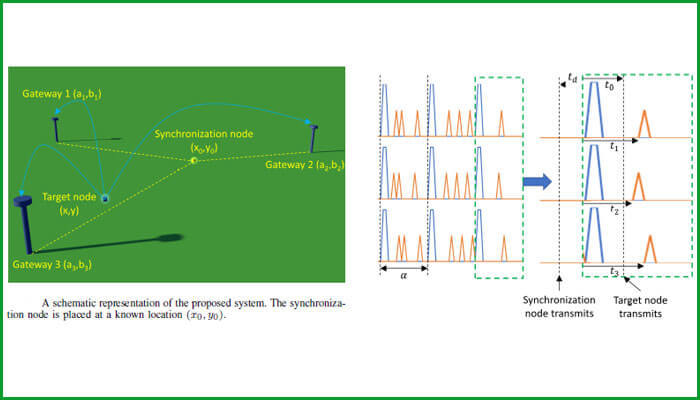Researchers from the Processes Architecture and Technologies Research in IoT (PATRIoT) lab at the International Institute of Information Technology Hyderabad (IIITH) have developed a novel localization approach that is GPS-free and uses LoRaWAN technology.
The next time you misplace something and kick yourself for being forgetful, a nifty low-cost tool to help you locate it could well be within your reach thanks to the research efforts of a IIITH team.
Currently, an array of asset-tracking technology solutions exist of which GPS or the Global Positioning System is the most popular. In fact, the widespread prevalence and popularity of GPS which is developed and run by the US has made it synonymous with global navigational satellite systems (GNSS). The system which is based on a network of 31 satellites provides not only precise time data but also location information via the longitude, latitude and altitude coordinates. The way it works is that each of the 31 satellites emits signals to receivers that determine their location by computing the difference between the time that a signal is sent and the time it is received. With an accuracy of 7.8 meters that it provides 95% of the time, there have been countless attempts to better its localization precision, and overcome other limitations such as a humongous power consumption and consequent inability to scale. Alternative technological solutions based on Wi-Fi, Bluetooth, RIFD, Ultra-wide bands, Barcodes and so on have emerged but they carry an equitable number of pros and cons.
Going GPS-Free
According to Dr. Aftab Hussain, Principal Investigator of PATRIoT lab, the biggest challenge for engineers in devising a localization approach lies in synchronising the clocks across the satellites. Currently, synchronization is achieved via highly sophisticated atomic clocks onboard the satellites. In a paper titled, “Feasibility of Standalone TDoA-based Localization Using LoRaWAN” that was published at the International Conference On Localization and GNSS (ICL-GNSS), Dr. Hussain and his students have presented a novel GPS-free method that uses LoRaWAN to provide location data. This method is based on the Time Difference of Arrival (TDoA) – a well-established geo-location technique that can locate a signal source from the different arrival times at three or more receivers. “Our method can even be used on Mars where there is no GPS,” remarks Dr. Hussain, while explaining how all hitherto TDoA-based approaches for LoRaWAN rely heavily on GPS for gateway synchronization.

The Novelty
In order to make their solution completely GNSS-free, Dr. Hussain and his lead research student Ruthwik Muppala proposed the installation of a dummy transmitter node equidistant from the gateways, such that a signal sent from that location will reach all the gateways at the exact same time. The dummy transmitter is programmed in such a way as to send out pulses of synchronisation periodically which helps in resetting the counters on all gateways. “With high precision being a necessary prerequisite for localization, our synchronisation is nano-second precise and I really think this is going to change the world,” says Dr. Hussain.

Deploy And Forget
While the proposed technique is based on LoRaWAN technology, it can be replicated with any other wireless technology as well. Explaining how their patent pending method can conserve huge amounts of power, Dr. Hussain says, “The localization is built into the transmission of the signal itself. Hence the target node only sends normal signals. There is nothing extra going on in terms of location data. For instance, if it is a temperature sensor, it will send out only temperature data. It is only due to the time difference in receiving data that we are aware of its location too.” In this way, a tracker whose emphasis is only on tracking location can be an extremely low-powered device and can be used for tracking assets like valuables and even children. But where this solution scores over other similar devices is its near-zero recharging condition. “One of the reasons we don’t have a lot of asset trackers that you could put in your purse or bag, is because they have to be recharged after a day or two. Whereas a tracker that can be deployed without the hassle of recharging for the next couple of years is a game changer!,” exclaims Dr. Hussain.
Location Precision
Currently, the best location accuracy that is being reported for TDoA when the gateways are synchronised using GPS is of the order of 300-500 mts. However these researchers have shown a maximum error of around 23 mts over an area of 8.6 kms. With a patent filed and a number of companies evincing interest for commercialising this technology, Dr. Hussain is visibly excited. “It was around 1.5 years ago that I had a light-bulb moment in France when we had a discussion on localization and synchronisation. We’ve been working on it ever since and I’m as excited about it or even more so now because I really think it is something big.”



Next post